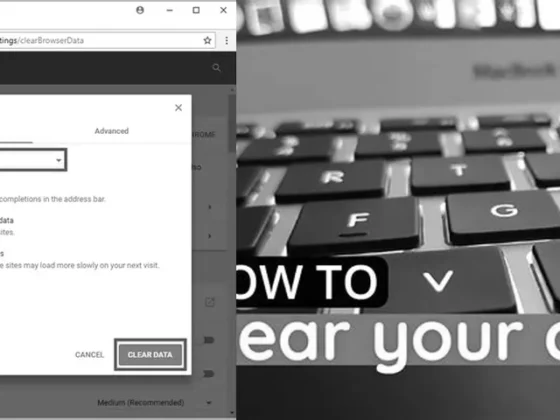What’s the Distinction Between Factory Reset and Powerwash on Chromebook? – Are you a Chromebook user who’s ever wondered about the difference between a factory reset and a powerwash? Well, you’re not alone! Many Chromebook owners find themselves confused when it comes to these two terms. But fear not, because in this article, we’re going to clear up the confusion for you. Whether you’re preparing for a fresh start or just curious about how to get your Chromebook back to its original state, we’ve got you covered. So sit back, relax, and let’s dive into the world of factory resets and powerwashes on your Chromebook.
Understanding Chromebook’s Powerwash Feature
When it comes to resetting your Chromebook, the term ‘Powerwash’ often pops up. This built-in feature is essentially a factory reset that returns your Chromebook to its original state, as if it just came out of the box. Let’s dive into what exactly happens when you initiate a Powerwash on your Chromebook.
What Does Powerwash Do?
A Powerwash performs a thorough cleansing of your Chromebook’s hard drive. This process erases all the data stored on the device, including:
- User settings
- Installed apps
- All types of files
It is important to note that after a Powerwash, all Google Accounts that were previously logged into the Chromebook will be removed. This is a critical step in protecting user privacy and ensuring that no personal data remains on the device should you decide to sell or give it away.
The Consequences of Powerwashing
Conducting a Powerwash is not a step to be taken lightly. The consequences are significant:
- The complete erasure of all personal data.
- Removal of all user accounts from the device.
- The necessity to set up the Chromebook from scratch upon next use.
Given these repercussions, it’s advised to back up important files to Google Drive or another cloud service before proceeding with a Powerwash.
Factory Reset vs. Powerwash: Clearing the Confusion
The terms ‘factory reset’ and ‘Powerwash’ are often used interchangeably when discussing Chromebooks, but they fundamentally refer to the same process. A factory reset, in the context of a Chromebook, is synonymous with Powerwash.
Is There a Difference?
As per the information provided, there is no distinction between a factory reset and Powerwash for a Chromebook. Both terminologies describe the same action: erasing all data from the hard drive and restoring the Chromebook to its original factory settings. This reset includes the deletion of all files in the Downloads folder, removal of all user accounts, and reversion of all settings to their defaults.
Why Use Powerwash?
There are several scenarios where a Powerwash (factory reset) might be necessary or beneficial:
- Preparing the device for a new user
- Resolving software issues that cannot be fixed through other methods
- Improving performance if the Chromebook has become significantly slow
- Ensuring data privacy before selling or disposing of the Chromebook
Understanding these applications can help you make an informed decision about whether to proceed with a Powerwash.
Preparing for a Powerwash
Before you initiate a Powerwash, take the following steps to ensure that you don’t lose valuable data:
- Back up all personal files to Google Drive or another cloud service.
- Make sure you know the login credentials for all Google Accounts that you’ll need to restore afterward.
- Document any specific settings or preferences you want to reapply after the reset.
These preparatory actions are essential to a smooth transition back to a fully operational Chromebook post-Powerwash.
Executing a Powerwash
Performing a Powerwash on a Chromebook is a straightforward process. Navigate to the settings menu, find the ‘Reset’ section, and select ‘Powerwash’. You’ll then be prompted to confirm your decision. Once confirmed, the Chromebook will commence the wiping process.
Step-by-Step Powerwash Process
- Sign out of your Chromebook.
- Press Ctrl + Alt + Shift + R simultaneously.
- Click ‘Restart’ in the box that appears.
- In the next box, select ‘Powerwash’ and then ‘Continue’.
After these steps, your device will restart as a clean slate, allowing you to set it up anew.
Post-Powerwash: Setting Up Your Chromebook Again
Once the Powerwash is complete, your Chromebook will behave as if it’s being turned on for the first time. You’ll be guided through the initial setup process, where you will:
- Select a language and connect to Wi-Fi.
- Accept the Google Chrome OS terms.
- Sign in with your Google Account (if you have one).
It’s critical to have your Google Account credentials ready, as this will allow you to easily restore your preferences and sync your previously backed-up data.
Conclusion: Making an Informed Decision
Understanding the implications of a Powerwash is crucial for any Chromebook user. Remember, Powerwash and factory reset are the same process on a Chromebook, designed to wipe the slate clean and start afresh. By following the guidelines and steps outlined in this post, you can ensure that your Chromebook reset is carried out effectively and without any loss of important data.
Whether you’re troubleshooting, transferring ownership, or just looking to declutter your digital space, a Powerwash can be a powerful tool when used appropriately. By backing up your data, ensuring you have all necessary account information, and following the steps carefully, you can breathe new life into your Chromebook and enjoy a pristine user experience once again.
FAQ & Related Questions about the Difference Between Factory Reset and Powerwash on Chromebook
Q: What is the difference between factory reset and powerwash on Chromebook?
A: Factory reset and powerwash on Chromebook are essentially the same thing. Both actions wipe the device clean and restore it to a brand-new state.
Q: What does powerwash do on a Chromebook?
A: Powerwash, also known as a factory reset, erases all information on the Chromebook’s hard drive, including settings, apps, and files.
Q: Will powerwash remove all my Google Accounts from the Chromebook?
A: Yes, during a powerwash, all Google Accounts previously used on the Chromebook will be removed. However, they can be restored later with the use of the same accounts.
Q: When should I powerwash my Chromebook?
A: You should powerwash your Chromebook if you’re getting rid of it, you want to change the owner, or you encounter a major glitch that requires a complete system wipe.
Q: Will powerwashing my Chromebook delete the files in the Downloads folder?
A: Yes, resetting a Chromebook to factory settings through powerwash will erase all the information on the Chromebook’s hard drive, including all the files in the Downloads folder.


